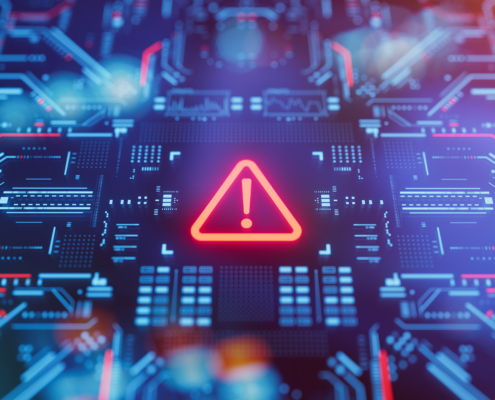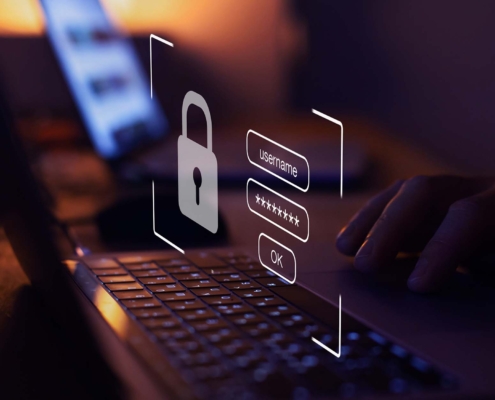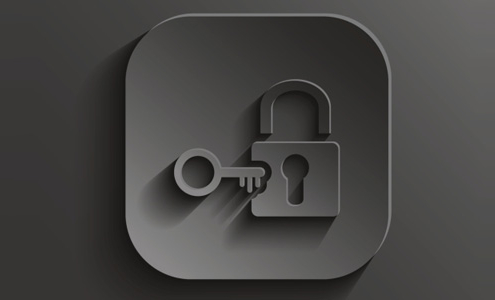 https://www.technologyresponse.com/wp-content/uploads/2024/08/Ultimate-Guide-to-Ransomware.jpg
1250
2000
Abstrakt Marketing
/wp-content/uploads/2024/06/logo-color.svg
Abstrakt Marketing2023-10-26 15:00:002024-12-30 06:34:05How Does Ransomware Work? Understanding Prevention, Detection, and Recovery Strategies
https://www.technologyresponse.com/wp-content/uploads/2024/08/Ultimate-Guide-to-Ransomware.jpg
1250
2000
Abstrakt Marketing
/wp-content/uploads/2024/06/logo-color.svg
Abstrakt Marketing2023-10-26 15:00:002024-12-30 06:34:05How Does Ransomware Work? Understanding Prevention, Detection, and Recovery StrategiesDo you know how to stay safe online? Take a look at some of the tools, statistics, and trends that can help you improve your cybersecurity awareness.
What Is Cybersecurity Awareness Month?
See Yourself in Cyber
- Think Before You Click: Social engineering tactics like phishing are becoming more advanced, so keep a keen eye on any links that appear in your inbox. They could be an attempt to get you to reveal personal information or to install malware on your device.
- Update Your Software: Updates are rolled out regularly for a reason. They provide your device with up-to-date security protocols that defend against the most recent cyber threats. If you receive a notification to update your software, it’s best to act swiftly. You can also turn on automatic updates so you don’t forget to update your software in the future.
- Use Strong Passwords: Your password is the first line of defense against security breaches. It should be long, random, and unique for each of your accounts. You can use a password manager to both generate new, complex passwords and help you keep track of your current passwords.
- Enable Multi-factor Authentication: Multi-factor authentication is one of the best steps you can take to protect your accounts from security breaches. Security questions, face or fingerprint identification, and SMS verification are all examples of multi-factor authentication.
See Yourself in Cyber
- Think Before You Click: Social engineering tactics like phishing are becoming more advanced, so keep a keen eye on any links that appear in your inbox. They could be an attempt to get you to reveal personal information or to install malware on your device.
- Update Your Software: Updates are rolled out regularly for a reason. They provide your device with up-to-date security protocols that defend against the most recent cyber threats. If you receive a notification to update your software, it’s best to act swiftly. You can also turn on automatic updates so you don’t forget to update your software in the future.
- Use Strong Passwords: Your password is the first line of defense against security breaches. It should be long, random, and unique for each of your accounts. You can use a password manager to both generate new, complex passwords and help you keep track of your current passwords.
- Enable Multi-factor Authentication: Multi-factor authentication is one of the best steps you can take to protect your accounts from security breaches. Security questions, face or fingerprint identification, and SMS verification are all examples of multi-factor authentication.
See Yourself in Cyber
- Think Before You Click: Social engineering tactics like phishing are becoming more advanced, so keep a keen eye on any links that appear in your inbox. They could be an attempt to get you to reveal personal information or to install malware on your device.
- Update Your Software: Updates are rolled out regularly for a reason. They provide your device with up-to-date security protocols that defend against the most recent cyber threats. If you receive a notification to update your software, it’s best to act swiftly. You can also turn on automatic updates so you don’t forget to update your software in the future.
- Use Strong Passwords: Your password is the first line of defense against security breaches. It should be long, random, and unique for each of your accounts. You can use a password manager to both generate new, complex passwords and help you keep track of your current passwords.
- Enable Multi-factor Authentication: Multi-factor authentication is one of the best steps you can take to protect your accounts from security breaches. Security questions, face or fingerprint identification, and SMS verification are all examples of multi-factor authentication.
Trends
Statistics
- 94% of malware is delivered by email, and 48% of malicious email attachments are Microsoft Office files. Without proper cybersecurity awareness training, it can be difficult for individuals to spot phishing attempts and suspicious links.
- The average ransomware payment in 2021 was $570,000. That’s a 518% increase from the year prior. Ransomware attacks can be devastating, especially for small businesses that might not have the bandwidth to deal with them effectively.
- 57% of organizations experience daily or weekly phishing attempts. These attacks account for more than 80% of security incidents.
More than 77% of organizations do not have an incident response plan. - It’s estimated that hackers attack once every three seconds. Cyber attacks are seemingly unrelenting. Without the proper network security or training, businesses can easily fall prey to these nonstop, complex attacks.
Back Up Your Data
Avoid Untrustworthy Sites
Avoid Public Wifi and Consider Using a VPN
- Access personal or financial information.
- Make online purchases.
- Stay signed into accounts. Once you’re finished using an application, sign out.
Share This Post
More Like This
 https://www.technologyresponse.com/wp-content/uploads/2024/08/Ultimate-Guide-to-Ransomware.jpg
1250
2000
Abstrakt Marketing
/wp-content/uploads/2024/06/logo-color.svg
Abstrakt Marketing2023-10-26 15:00:002024-12-30 06:34:05How Does Ransomware Work? Understanding Prevention, Detection, and Recovery Strategies
https://www.technologyresponse.com/wp-content/uploads/2024/08/Ultimate-Guide-to-Ransomware.jpg
1250
2000
Abstrakt Marketing
/wp-content/uploads/2024/06/logo-color.svg
Abstrakt Marketing2023-10-26 15:00:002024-12-30 06:34:05How Does Ransomware Work? Understanding Prevention, Detection, and Recovery Strategies https://www.technologyresponse.com/wp-content/uploads/2024/08/Is-Your-Small-Business-at-Risk.jpg
1250
2000
Abstrakt Marketing
/wp-content/uploads/2024/06/logo-color.svg
Abstrakt Marketing2023-09-21 15:00:002024-12-30 06:34:06Assessing and Overcoming Small Business Cybersecurity Risks
https://www.technologyresponse.com/wp-content/uploads/2024/08/Is-Your-Small-Business-at-Risk.jpg
1250
2000
Abstrakt Marketing
/wp-content/uploads/2024/06/logo-color.svg
Abstrakt Marketing2023-09-21 15:00:002024-12-30 06:34:06Assessing and Overcoming Small Business Cybersecurity Risks https://www.technologyresponse.com/wp-content/uploads/2024/08/Is-Your-Small-Business-Prepared_.jpg
1250
2000
Nate Riggins
/wp-content/uploads/2024/06/logo-color.svg
Nate Riggins2022-10-18 15:00:002024-12-30 06:34:08Signs It’s Time To Upgrade IT Services
https://www.technologyresponse.com/wp-content/uploads/2024/08/Is-Your-Small-Business-Prepared_.jpg
1250
2000
Nate Riggins
/wp-content/uploads/2024/06/logo-color.svg
Nate Riggins2022-10-18 15:00:002024-12-30 06:34:08Signs It’s Time To Upgrade IT Services https://www.technologyresponse.com/wp-content/uploads/2024/08/Is-Your-Small-Business-Prepared_.jpg
1250
2000
Nate Riggins
/wp-content/uploads/2024/06/logo-color.svg
Nate Riggins2022-09-26 15:00:002024-12-30 06:34:08A Guide to Cybersecurity for Small Businesses
https://www.technologyresponse.com/wp-content/uploads/2024/08/Is-Your-Small-Business-Prepared_.jpg
1250
2000
Nate Riggins
/wp-content/uploads/2024/06/logo-color.svg
Nate Riggins2022-09-26 15:00:002024-12-30 06:34:08A Guide to Cybersecurity for Small Businesses https://www.technologyresponse.com/wp-content/uploads/2024/08/Is-Penetration-Testing-Essential.jpg
1250
2000
Nate Riggins
/wp-content/uploads/2024/06/logo-color.svg
Nate Riggins2022-09-22 15:00:002024-12-30 06:34:08How Important Is Network Penetration Testing?
https://www.technologyresponse.com/wp-content/uploads/2024/08/Is-Penetration-Testing-Essential.jpg
1250
2000
Nate Riggins
/wp-content/uploads/2024/06/logo-color.svg
Nate Riggins2022-09-22 15:00:002024-12-30 06:34:08How Important Is Network Penetration Testing? https://www.technologyresponse.com/wp-content/uploads/2024/08/PErson-Typing-Login-Information-on-Laptop.jpg
1250
2000
Nate Riggins
/wp-content/uploads/2024/06/logo-color.svg
Nate Riggins2022-07-20 03:00:002024-12-30 06:34:09How Cybersecurity Has Changed
https://www.technologyresponse.com/wp-content/uploads/2024/08/PErson-Typing-Login-Information-on-Laptop.jpg
1250
2000
Nate Riggins
/wp-content/uploads/2024/06/logo-color.svg
Nate Riggins2022-07-20 03:00:002024-12-30 06:34:09How Cybersecurity Has Changed https://www.technologyresponse.com/wp-content/uploads/2024/08/April-Blog-2-Image.jpg
1250
2000
Nate Riggins
/wp-content/uploads/2024/06/logo-color.svg
Nate Riggins2022-05-19 15:00:002024-12-30 06:34:09What Is Penetration Testing?
https://www.technologyresponse.com/wp-content/uploads/2024/08/April-Blog-2-Image.jpg
1250
2000
Nate Riggins
/wp-content/uploads/2024/06/logo-color.svg
Nate Riggins2022-05-19 15:00:002024-12-30 06:34:09What Is Penetration Testing? https://www.technologyresponse.com/wp-content/uploads/2024/08/2021April23Security_A_PH-ASa9KY.jpeg
300
900
Nate Riggins
/wp-content/uploads/2024/06/logo-color.svg
Nate Riggins2021-04-23 21:00:122024-12-30 06:34:10Protect your Facebook and Twitter from hackers
https://www.technologyresponse.com/wp-content/uploads/2024/08/2021April23Security_A_PH-ASa9KY.jpeg
300
900
Nate Riggins
/wp-content/uploads/2024/06/logo-color.svg
Nate Riggins2021-04-23 21:00:122024-12-30 06:34:10Protect your Facebook and Twitter from hackers https://www.technologyresponse.com/wp-content/uploads/2024/08/2021March31Security_A_PH-yXGGc3.jpeg
300
900
Nate Riggins
/wp-content/uploads/2024/06/logo-color.svg
Nate Riggins2021-03-31 21:00:002024-12-30 06:34:115 Ways systems can be breached
https://www.technologyresponse.com/wp-content/uploads/2024/08/2021March31Security_A_PH-yXGGc3.jpeg
300
900
Nate Riggins
/wp-content/uploads/2024/06/logo-color.svg
Nate Riggins2021-03-31 21:00:002024-12-30 06:34:115 Ways systems can be breachedAbout Us
Technology Response Team delivers comprehensive IT and cybersecurity solutions for nationwide businesses with locations in Denver and Louisville.